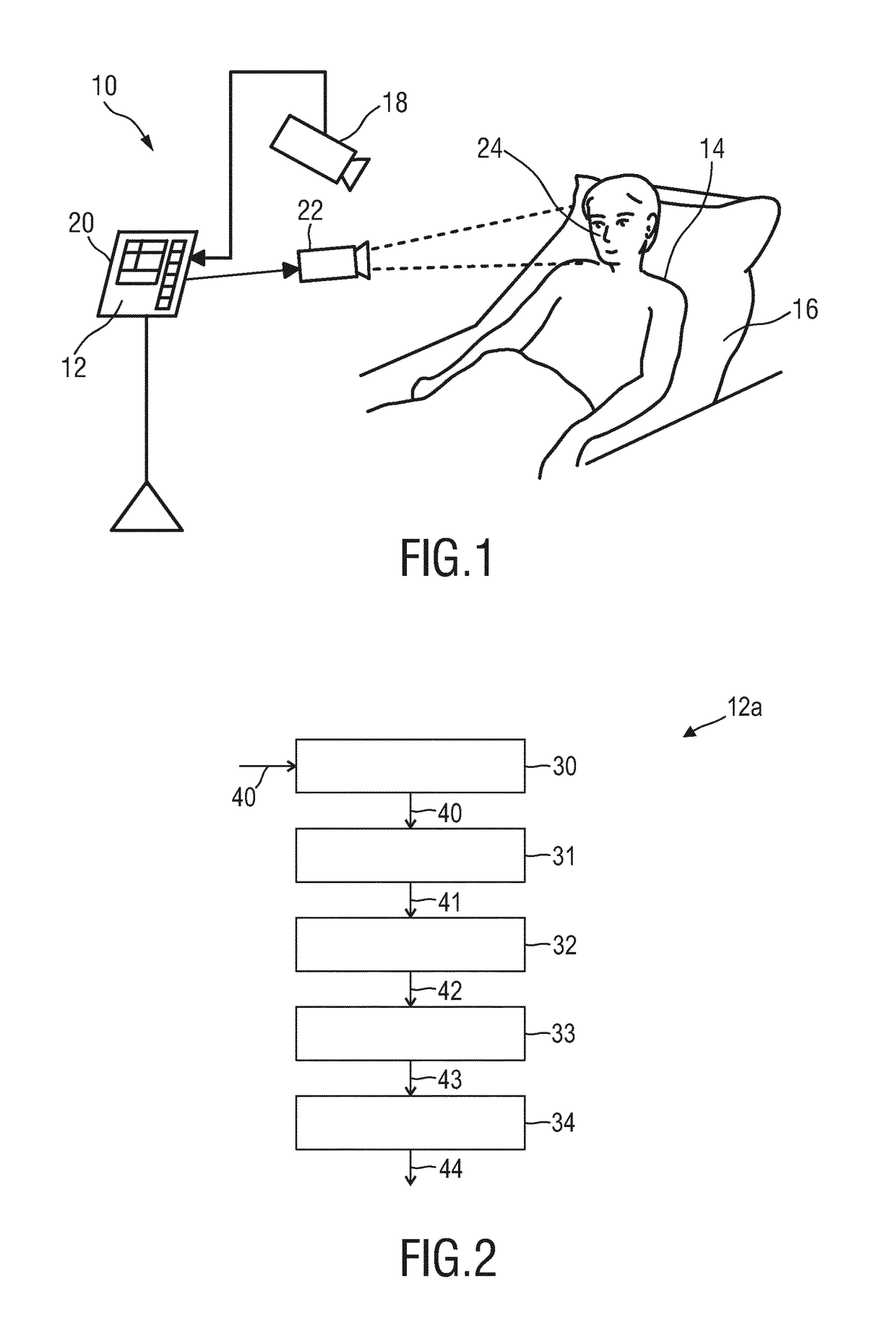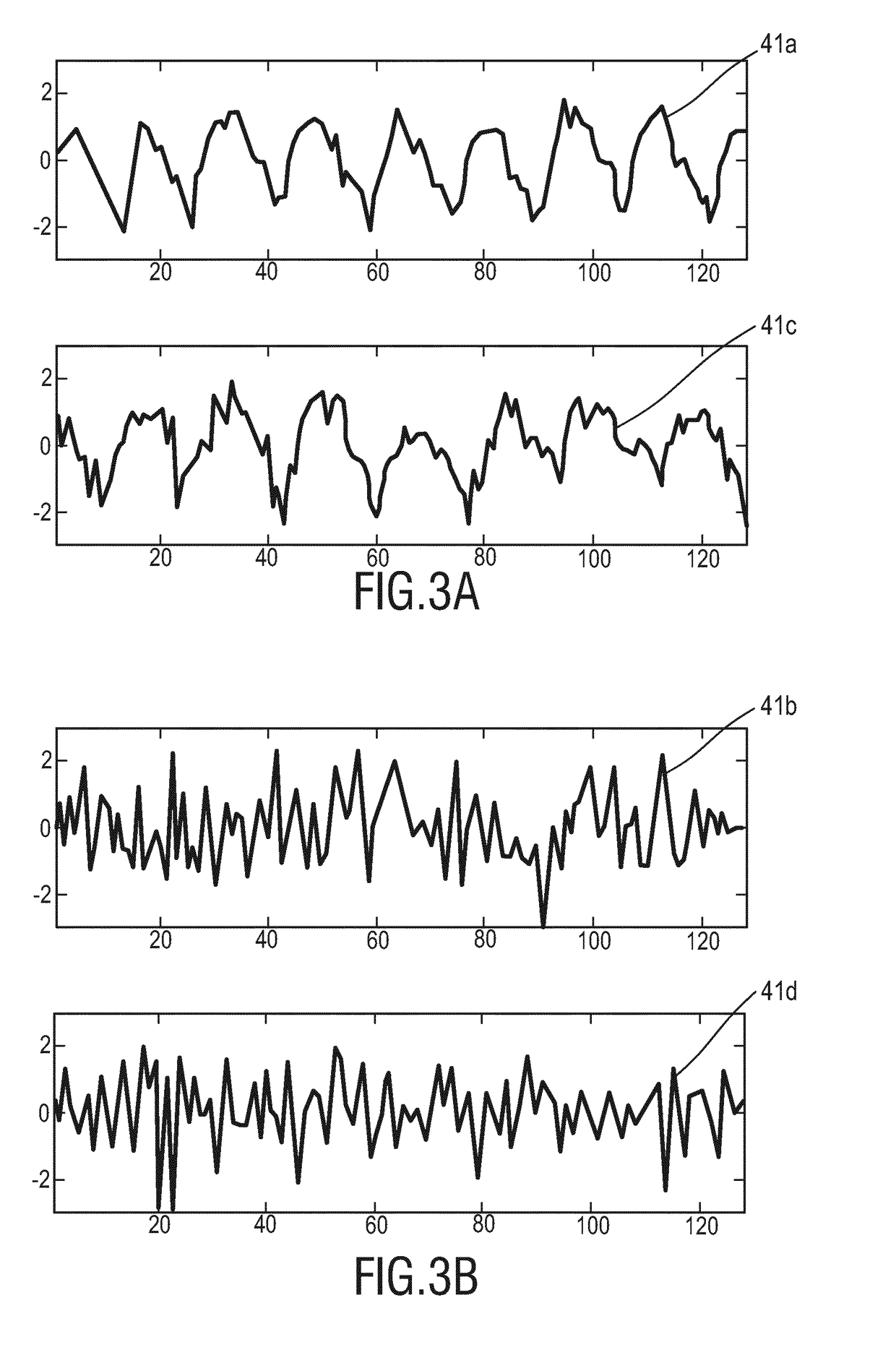Device, system and method for skin detection
a technology of skin detection and remote photoplethysmography, applied in the field of remote photoplethysmographic systems and devices, can solve the problems of not being robust to changes in ambient light color, not being able to detect skin areas under low illumination conditions or in darkness, and achieve reliable, accurate and fast skin detection.
- Summary
- Abstract
- Description
- Claims
- Application Information
AI Technical Summary
Benefits of technology
Problems solved by technology
Method used
Image
Examples
first embodiment
[0062]FIG. 2 shows a schematic diagram of a device 12a according to the present invention, which may be used as device 12 in the system 10 shown in FIG. 1. For deriving one or more vital signs of the subject 14 a skin area of the subject has to be found in the image data. For this purpose, the proposed device 12a comprises an input interface 30 for obtaining image data 40 of a scene, said image data comprising a time sequence of image frames acquired by the imaging unit 18. An extraction unit 31 extracts a PPG signal 41 from a region of interest of said image data, wherein said region of interest may a single pixel or a group of pixel or an area resulting from a segmentation of one or more image frames. A transformation unit 32 transforms said PPG signal 41 into a spectral signal 42. A sorting unit 33 sorts said spectral signal 42 to obtain a sorted spectral signal 43 representing a descriptor. Finally, a classifier 34 classifies said region of interest as skin region of a living be...
second embodiment
[0073]FIG. 5 shows a schematic diagram of a device 12b according to the present invention. In this embodiment a control unit 35 is provided for controlling said transformation unit 32 and said sorting unit 33 to perform two or more iterations, wherein the sorted spectral signal 43 output from said sorting unit 33 is used as input PPG signal 41′ for the transformation unit 32 in the next iteration. Thus, according to this embodiment a multiscale iteration may be performed as will be explained in the following.
[0074]With the first embodiment of the device 12a a transformed signal SL / 2 is obtained given the input PPG signal {right arrow over (P)}L, where pulse and noise have self-unified but mutually different interpretations. If the descriptor for pulse and noise is compared, the pulse-descriptor has a salient feature (e.g., peak at first location), whereas the noise does not. To obtain better classification performance, the descriptors from different classes require large between-cla...
PUM
 Login to View More
Login to View More Abstract
Description
Claims
Application Information
 Login to View More
Login to View More - R&D
- Intellectual Property
- Life Sciences
- Materials
- Tech Scout
- Unparalleled Data Quality
- Higher Quality Content
- 60% Fewer Hallucinations
Browse by: Latest US Patents, China's latest patents, Technical Efficacy Thesaurus, Application Domain, Technology Topic, Popular Technical Reports.
© 2025 PatSnap. All rights reserved.Legal|Privacy policy|Modern Slavery Act Transparency Statement|Sitemap|About US| Contact US: help@patsnap.com



